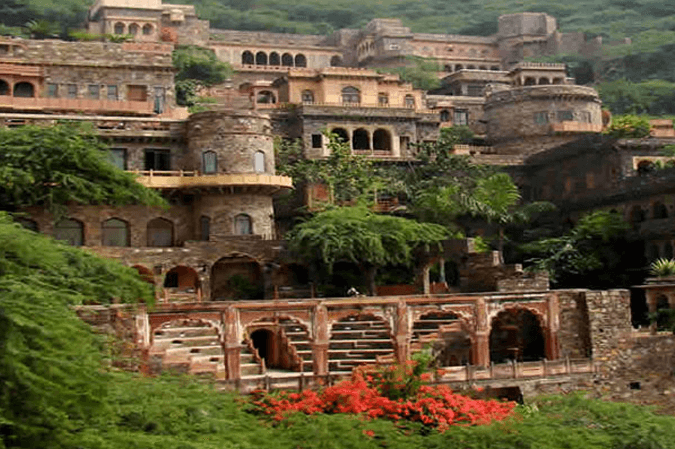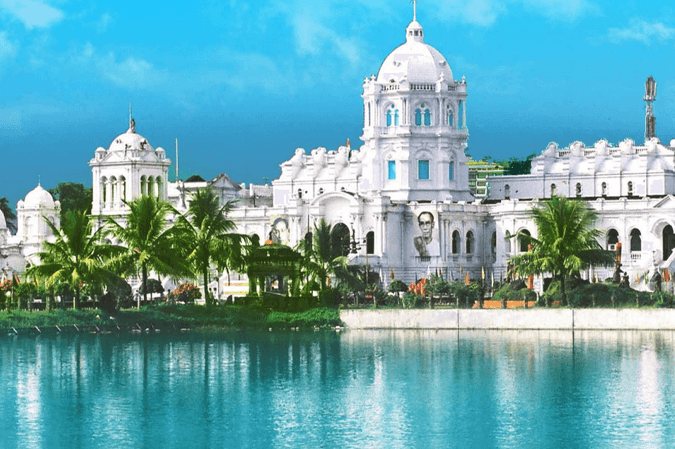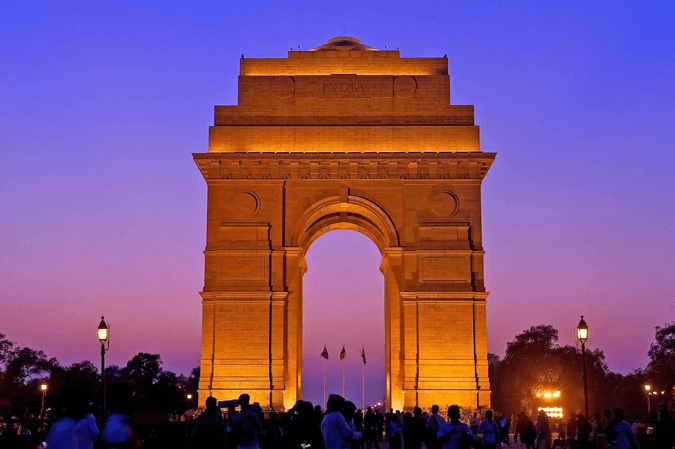1. History
Haryana, a state in northern India, has a rich historical legacy that dates back to ancient times. The region is often associated with the epic battles of the Mahabharata, particularly the Battle of Kurukshetra, where Lord Krishna delivered the Bhagavad Gita. The name “Haryana” is derived from the Sanskrit words “Hari” (God) and “Ayana” (home), meaning “the abode of God.”
Throughout history, Haryana has been a part of various empires and kingdoms, including the Maurya, Gupta, and Mughal empires. During the medieval period, Haryana was a significant center of power and culture. The region saw major historical events, such as the battles of Panipat, which were decisive in shaping the history of India.
Post-independence, Haryana was part of the state of Punjab until 1966, when it was carved out as a separate state to meet the linguistic and cultural aspirations of the people. Since then, Haryana has grown into one of the most prosperous and industrialized states in India.
2. Landscape
Haryana is primarily a landlocked state characterized by its diverse landscape:
- Plains: Most of Haryana is covered by the fertile plains of the Indo-Gangetic Plain, making it an agriculturally rich region.
- Aravalli Range: The southern part of Haryana is marked by the presence of the Aravalli Hills, one of the oldest mountain ranges in India.
- Yamuna River: The Yamuna River forms the eastern boundary of Haryana, providing essential water resources for agriculture.
3. Area
Haryana covers an area of approximately 44,212 square kilometers (17,070 square miles). Despite being one of the smaller states in India, it plays a crucial role in the country’s agriculture and industry.
4. Climatic Conditions
Haryana experiences a diverse climate due to its geographical location:
- Summer: (March to June) is characterized by hot and dry weather, with temperatures often rising above 40°C (104°F). The state experiences heatwaves known as “loo” during this season.
- Monsoon: (July to September) brings moderate rainfall, with an average annual precipitation of about 700 mm. The rainfall is unevenly distributed, with the southern parts receiving less rain.
- Winter: (October to February) is cool and dry, with temperatures ranging from 5°C to 20°C (41°F to 68°F). Frost is common in the northern parts during peak winter.
5. Historical Places
Haryana is home to several historical and cultural landmarks that reflect its rich heritage:
- Kurukshetra: Known as the land of the Mahabharata, Kurukshetra is a significant pilgrimage site for Hindus. The Brahma Sarovar and Jyotisar, where Lord Krishna is said to have delivered the Bhagavad Gita, are key attractions.
- Panipat: The site of three major battles in Indian history, Panipat is a city steeped in historical significance. The Panipat Museum, Kabuli Bagh Mosque, and Ibrahim Lodhi’s tomb are notable sites.
- Surajkund: Located near Delhi, Surajkund is famous for its annual crafts fair and the ancient Sun Temple that once stood there.
- Feroze Shah’s Palace: In Hisar, this complex was built by Feroze Shah Tughlaq in the 14th century and includes a mosque, a palace, and a minar (tower).
- Pinjore Gardens: Also known as Yadavindra Gardens, these Mughal-style gardens near Chandigarh are a beautiful example of terraced gardens.
6. Festivals
Haryana’s festivals are a reflection of its agrarian lifestyle and cultural diversity:
- Baisakhi: Celebrated in April, Baisakhi marks the beginning of the harvest season and the Punjabi New Year. It is celebrated with much fervor in Haryana’s rural areas.
- Teej: A monsoon festival celebrated primarily by women, Teej involves rituals, singing, and dancing. It marks the onset of the monsoon and is associated with the worship of Goddess Parvati.
- Haryali Teej: Celebrated during the monsoon, this festival is dedicated to greenery and nature, with prayers for a good harvest.
- Diwali: The festival of lights is widely celebrated across Haryana with traditional rituals, fireworks, and family gatherings.
- Gugga Naumi: This unique festival is dedicated to Gugga Pir, a folk deity worshipped in Haryana. It involves processions, music, and community feasts.
7. Environment
Haryana’s environment is influenced by its agricultural practices, rapid urbanization, and industrial growth:
- Agriculture: Haryana is one of India’s leading agricultural states, known for its production of wheat, rice, sugarcane, and cotton. The Green Revolution had a significant impact on Haryana, transforming it into a major food grain producer.
- Forests: The state has limited forest cover, mainly in the Aravalli Hills and along the Yamuna River. However, efforts are being made to increase afforestation and protect existing green areas.
- Water Resources: Haryana faces challenges related to water scarcity and groundwater depletion, particularly in its southern regions. The state is working on improving water management through initiatives like rainwater harvesting and canal irrigation.
- Wildlife: Haryana is home to a variety of wildlife, including deer, leopards, and migratory birds. The Sultanpur National Park and the Kalesar National Park are significant wildlife reserves in the state.
8. Society
Haryana’s society is known for its strong cultural traditions, progressive policies, and agricultural prosperity:
- Population: Haryana has a diverse population, with a mix of rural and urban communities. The majority of the population practices Hinduism, followed by Sikhism, Islam, and Christianity.
- Language: Hindi is the official language, while Haryanvi (a dialect of Hindi) is widely spoken in rural areas. Punjabi and English are also commonly used.
- Culture: Haryana has a rich cultural heritage, with folk music, dance (such as Jhumar and Ghoomar), and traditional attire like the dhoti-kurta for men and ghagra-choli for women.
- Cuisine: Haryana’s cuisine is simple yet hearty, with dishes like roti, dal, saag, and lassi being staples. The state is also known for its milk and dairy products, including ghee and curd.
9. Interesting and Hidden Facts
- Birthplace of Vedic Civilization: Haryana is often referred to as the “Land of the Vedas,” as it is believed to be the birthplace of the ancient Vedic civilization. The Rigveda, one of the oldest texts in the world, was composed here.
- Milk Capital of India: Haryana is one of the largest producers of milk in India, contributing significantly to the country’s dairy industry.
- First War of Independence: The first revolt against British rule in 1857, also known as the First War of Independence, saw significant participation from the people of Haryana, especially from areas like Hisar and Rohtak.
- Sports Hub: Haryana is known for producing some of India’s finest athletes, particularly in wrestling, boxing, and kabaddi. The state has contributed many Olympic medalists to the nation.
- Progressive State: Haryana was the first state in India to implement the “Beti Bachao, Beti Padhao” (Save the Daughter, Educate the Daughter) campaign, aimed at improving the status of women and addressing the issue of female foeticide.
Sources
- History and Cultural References:
- Rao, L.R., A History of Haryana (1993), Manohar Publishers.
- Haryana Government Official Website, “History of Haryana,” 2023.
- Geography and Landscape:
- Encyclopedia Britannica, “Haryana,” 2023.
- Haryana State Gazetteer, “Geography of Haryana,” 2022.
- Climate:
- Indian Meteorological Department (IMD), “Climate of Haryana,” 2022.
- Historical Places:
- Archaeological Survey of India, “Monuments of Haryana,” 2021.
- Haryana Tourism Official Website, “Heritage Sites in Haryana,” 2023.
- Festivals:
- The Hindu, “Festivals of Haryana,” 2022.
- Haryana Tourism Official Website, “Festivals of Haryana,” 2023.
- Environment:
- Haryana State Pollution Control Board, “Environmental Status of Haryana,” 2021.
- Ministry of Environment, Forest and Climate Change, “Forests and Wildlife of Haryana,” 2020.
- Society:
- The Times of India, “Socio-Economic Profile of Haryana,” 2022.
- United Nations Development Programme (UNDP), “Human Development Report 2020.”
- Interesting and Hidden Facts:
- Economic Times, “Unique Aspects of Haryana’s Economy,” 2022.
- Haryana Government Official Website, “Interesting Facts about Haryana,” 2023.
- Image Source: wp-content



